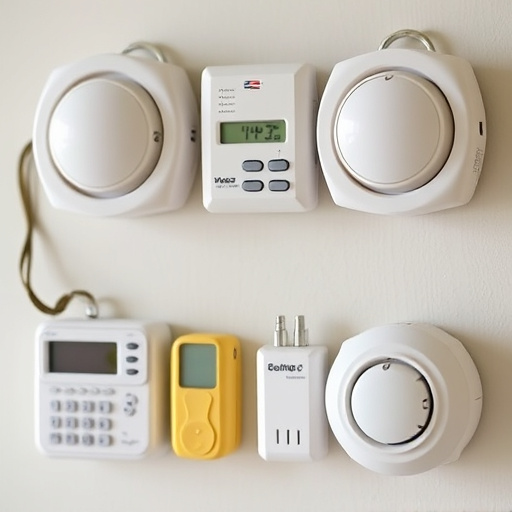Maximum Range Personal Safety Sirens enhance individual safety with advanced acoustic technology, projecting high-decibel alerts over extended distances (up to 1000 meters). Environmental factors like terrain, weather, and obstructions impact range, while proper installation, maintenance, and user training maximize effectiveness. Legal compliance and regulatory adherence are crucial, ensuring safe and reliable operation within noise and privacy standards.
Personal safety is paramount, especially in today’s digital era. Electronic personal safety alert systems, particularly maximum range personal safety sirens, offer enhanced protection against potential threats. This comprehensive guide delves into the cutting-edge technologies powering these devices, exploring factors influencing their maximum range coverage. We’ll also discuss benefits, applications, installation, maintenance, user training, regulatory considerations, and compliance.
- Understanding Personal Safety Siren Technologies
- Factors Affecting Maximum Range Coverage
- Benefits and Applications of Long-Range Sirens
- Installation, Maintenance, and User Training
- Regulatory Considerations and Compliance
Understanding Personal Safety Siren Technologies
Personal Safety Siren Technologies have evolved significantly, with a key focus on maximizing range and effectiveness. These advanced systems utilize state-of-the-art acoustic principles to project high-decibel alerts over extended distances, ensuring that help can be summoned quickly in emergencies. The maximum range of these sirens is particularly crucial, allowing them to reach not only immediate surroundings but also nearby streets and even parks, thereby increasing the chances of attracting attention from passersby or emergency services.
Designed for personal use, these compact yet powerful devices often incorporate features like automatic activation upon impact or movement, as well as adjustable sound levels to cater to different environments. Their portability makes them ideal for outdoor activities, travel, and situations where individual safety is paramount. With a maximum range personal safety siren, users can feel secure knowing that their distress signals will be heard even in remote or noisy locations.
Factors Affecting Maximum Range Coverage
Several factors influence the maximum range coverage of a personal safety alert system, particularly a maximum range personal safety siren. One key factor is the ambient environment. Obstructions like buildings, trees, or other physical structures can significantly reduce signal strength and range. The type and height of these obstructions, as well as their proximity to the user, play a crucial role in determining effective coverage.
Another important consideration is weather conditions. Rain, snow, or fog can attenuate radio waves, impacting the overall range of the siren. Additionally, the power output of the device itself is vital; higher power ratings generally translate to longer ranges, assuming ideal conditions. User terrain and elevation also come into play, as climbing higher ground can enhance signal propagation due to reduced interference and better line-of-sight to receiving antennas.
Benefits and Applications of Long-Range Sirens
Long-range personal safety sirens offer a significant advantage in terms of visibility and accessibility, especially in vast or remote areas. With a maximum range of up to 1000 meters (or more), these powerful devices can alert individuals over an extensive area, ensuring that help is on the way during emergencies. This feature is particularly beneficial for outdoor events, large-scale gatherings, and rural communities where traditional warning systems may not be as effective due to distance or terrain constraints.
The applications of such sirens are diverse. They can be deployed at music festivals, sports arenas, construction sites, and remote campgrounds to quickly communicate danger or assemble crowds during emergencies. Their long-reaching capabilities enable efficient communication across wide open spaces, ensuring the safety and well-being of participants or workers. Moreover, in critical situations like natural disasters or community threats, these sirens can serve as a crucial early warning system, providing vital time for people to take necessary precautions.
Installation, Maintenance, and User Training
Proper installation is key for an electronic personal safety alert system, like a Maximum Range Personal Safety Siren, to function effectively. It should be strategically placed in areas most likely to be accessed by unauthorized individuals or high-risk zones within your property. Following manufacturer guidelines ensures optimal positioning, maximizing coverage and alerting range. Regular maintenance is equally vital to keep the system operational. This includes testing batteries regularly, inspecting sensors for any damage, and clearing debris from the siren’s lens or openings to prevent false triggers.
Comprehensive user training is another critical aspect that often goes overlooked. Teaching users how to operate the alert system properly ensures it can be activated quickly in an emergency. It’s essential to provide clear instructions on silencing false alarms, setting sensitivity levels, and understanding different alarm modes. Regular drills can help familiarize everyone with the system, fostering a culture of preparedness and enhancing overall personal safety.
Regulatory Considerations and Compliance
When implementing an electronic personal safety alert system, especially one featuring a maximum range personal safety siren, it’s crucial to navigate regulatory considerations and compliance requirements. Local laws and regulations regarding noise levels, privacy, and emergency communication systems must be thoroughly understood to ensure your device operates within legal boundaries. Exceeding permitted decibel levels or interfering with existing emergency services can result in fines and legal repercussions.
Compliance involves securing necessary certifications for product safety and performance, as well as adhering to industry standards set by organizations like UL (Underwriters Laboratories) or CE (Conformité Européenne). These certifications ensure that your personal safety siren meets established safety criteria, reliability, and compatibility with other systems. By addressing these regulatory aspects proactively, users can maximize the effectiveness of their device while avoiding potential legal pitfalls.
Electronic personal safety alert systems, specifically maximum range personal safety sirens, offer enhanced protection in various scenarios. By understanding the technology, factors influencing range, benefits, installation best practices, and regulatory compliance, individuals and organizations can leverage these devices effectively. Incorporating long-range sirens into safety strategies ensures better coverage, faster response times, and increased peace of mind, ultimately contributing to safer environments.
